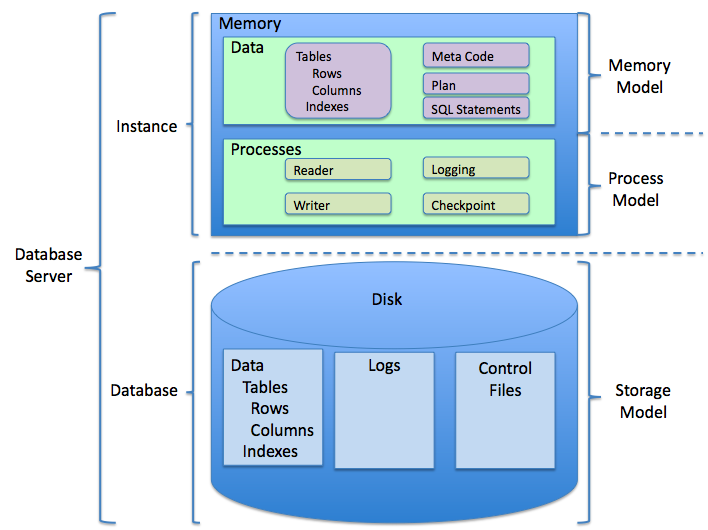|
Kapali Eswaran
Kapali Eswaran is one of the founding members of the IBM System R Project, which formed the genesis of relational database technology. Eswaran is a graduate of Stanford University and University of California, Berkeley. He was an architect of IBM System R IBM System R is a database system built as a research project at IBM's San Jose Research Laboratory beginning in 1974. System R was a seminal project: it was the first implementation of SQL, which has since become the standard relational data ..., the precursor to DB2. Eswaran was one of the inventors of SQL language. The Eswaran principle relating to database locking and transactions is a contribution that he made along with Jim Gray and Irv Traiger while working as a scientist at IBM Research. Subsequently, he launched Esvel, Inc. (acquired by Cullinet Software in 1987 for 30+ million, which itself was acquired by Computer Associates which then was acquired by Bradcom) and Kaps Corporation (technology acquired by sub ... [...More Info...] [...Related Items...] OR: [Wikipedia] [Google] [Baidu] |
IBM System R
IBM System R is a database system built as a research project at IBM's San Jose Research Laboratory beginning in 1974. System R was a seminal project: it was the first implementation of SQL, which has since become the standard relational data query language. It was also the first system to demonstrate that a relational database management system could provide good transaction processing performance. Design decisions in System R, as well as some fundamental algorithm In mathematics and computer science, an algorithm () is a finite sequence of rigorous instructions, typically used to solve a class of specific problems or to perform a computation. Algorithms are used as specifications for performing ... choices (such as the dynamic programming algorithm used in query optimization), influenced many later relational systems. System R's first customer was Pratt & Whitney in 1977.. See also * IBM Db2 * IBM SQL/DS * Ingres (database) * SQL * System/38 Refer ... [...More Info...] [...Related Items...] OR: [Wikipedia] [Google] [Baidu] |
Relational Database
A relational database is a (most commonly digital) database based on the relational model of data, as proposed by E. F. Codd in 1970. A system used to maintain relational databases is a relational database management system (RDBMS). Many relational database systems are equipped with the option of using the SQL (Structured Query Language) for querying and maintaining the database. History The term "relational database" was first defined by E. F. Codd at IBM in 1970. Codd introduced the term in his research paper "A Relational Model of Data for Large Shared Data Banks". In this paper and later papers, he defined what he meant by "relational". One well-known definition of what constitutes a relational database system is composed of Codd's 12 rules. However, no commercial implementations of the relational model conform to all of Codd's rules, so the term has gradually come to describe a broader class of database systems, which at a minimum: # Present the data to the user as rel ... [...More Info...] [...Related Items...] OR: [Wikipedia] [Google] [Baidu] |
Stanford University
Stanford University, officially Leland Stanford Junior University, is a Private university, private research university in Stanford, California. The campus occupies , among the largest in the United States, and enrolls over 17,000 students. Stanford is considered among the most prestigious universities in the world. Stanford was founded in 1885 by Leland Stanford, Leland and Jane Stanford in memory of their only child, Leland Stanford Jr., who had died of typhoid fever at age 15 the previous year. Leland Stanford was a List of United States senators from California, U.S. senator and former List of governors of California, governor of California who made his fortune as a Big Four (Central Pacific Railroad), railroad tycoon. The school admitted its first students on October 1, 1891, as a Mixed-sex education, coeducational and non-denominational institution. Stanford University struggled financially after the death of Leland Stanford in 1893 and again after much of the campus was ... [...More Info...] [...Related Items...] OR: [Wikipedia] [Google] [Baidu] |
University Of California
The University of California (UC) is a public land-grant research university system in the U.S. state of California. The system is composed of the campuses at Berkeley, Davis, Irvine, Los Angeles, Merced, Riverside, San Diego, San Francisco, Santa Barbara, and Santa Cruz, along with numerous research centers and academic abroad centers. The system is the state's land-grant university. Major publications generally rank most UC campuses as being among the best universities in the world. Six of the campuses, Berkeley, Davis, Irvine, Los Angeles, Santa Barbara, and San Diego are considered Public Ivies, making California the state with the most universities in the nation to hold the title. UC campuses have large numbers of distinguished faculty in almost every academic discipline, with UC faculty and researchers having won 71 Nobel Prizes as of 2021. The University of California currently has 10 campuses, a combined student body of 285,862 students, 24,400 faculty ... [...More Info...] [...Related Items...] OR: [Wikipedia] [Google] [Baidu] |
IBM DB2
Db2 is a family of data management products, including database servers, developed by IBM. It initially supported the relational model, but was extended to support object–relational features and non-relational structures like JSON and XML. The brand name was originally styled as DB/2, then DB2 until 2017 and finally changed to its present form. History Unlike other database vendors, IBM previously produced a platform-specific Db2 product for each of its major operating systems. However, in the 1990s IBM changed track and produced a Db2 common product, designed with a mostly common code base for L-U-W (Linux-Unix-Windows); DB2 for System z and DB2 for IBM i are different. As a result, they use different drivers. DB2 traces its roots back to the beginning of the 1970s when Edgar F. Codd, a researcher working for IBM, described the theory of relational databases, and in June 1970 published the model for data manipulation. In 1974, the IBM San Jose Research center dev ... [...More Info...] [...Related Items...] OR: [Wikipedia] [Google] [Baidu] |
IBM Research
IBM Research is the research and development division for IBM, an American multinational information technology company headquartered in Armonk, New York, with operations in over 170 countries. IBM Research is the largest industrial research organization in the world and has twelve labs on six continents. IBM employees have garnered six Nobel Prizes, six Turing Awards, 20 inductees into the U.S. National Inventors Hall of Fame, 19 National Medals of Technology, five National Medals of Science and three Kavli Prizes. , the company has generated more patents than any other business in each of 25 consecutive years, which is a record. History The roots of today's IBM Research began with the 1945 opening of the Watson Scientific Computing Laboratory at Columbia University. This was the first IBM laboratory devoted to pure science and later expanded into additional IBM Research locations in Westchester County, New York, starting in the 1950s,Beatty, Jack, (editor''Colussus: how ... [...More Info...] [...Related Items...] OR: [Wikipedia] [Google] [Baidu] |
Transaction Processing System
Transaction processing is a way of computing that divides work into individual, indivisible operations, called transactions. A transaction processing system (TPS) is a software system, or software/ hardware combination, that supports transaction processing. History The first transaction processing system was SABRE, made by IBM for American Airlines, which became operational in 1964. Designed to process up to 83,000 transactions a day, the system ran on two IBM 7090 computers. SABRE was migrated to IBM System/360 computers in 1972, and became an IBM product first as '' Airline control Program (ACP)'' and later as '' Transaction Processing Facility (TPF)''. In addition to airlines TPF is used by large banks, credit card companies, and hotel chains. The Hewlett-Packard NonStop system (formerly Tandem NonStop) was a hardware and software system designed for ''Online Transaction Processing (OLTP)'' introduced in 1976. The systems were designed for transaction processing and pr ... [...More Info...] [...Related Items...] OR: [Wikipedia] [Google] [Baidu] |
Living People
Related categories * :Year of birth missing (living people) / :Year of birth unknown * :Date of birth missing (living people) / :Date of birth unknown * :Place of birth missing (living people) / :Place of birth unknown * :Year of death missing / :Year of death unknown * :Date of death missing / :Date of death unknown * :Place of death missing / :Place of death unknown * :Missing middle or first names See also * :Dead people * :Template:L, which generates this category or death years, and birth year and sort keys. : {{DEFAULTSORT:Living people 21st-century people People by status ... [...More Info...] [...Related Items...] OR: [Wikipedia] [Google] [Baidu] |
People In Information Technology
A person ( : people) is a being that has certain capacities or attributes such as reason, morality, consciousness or self-consciousness, and being a part of a culturally established form of social relations such as kinship, ownership of property, or legal responsibility. The defining features of personhood and, consequently, what makes a person count as a person, differ widely among cultures and contexts. In addition to the question of personhood, of what makes a being count as a person to begin with, there are further questions about personal identity and self: both about what makes any particular person that particular person instead of another, and about what makes a person at one time the same person as they were or will be at another time despite any intervening changes. The plural form "people" is often used to refer to an entire nation or ethnic group (as in "a people"), and this was the original meaning of the word; it subsequently acquired its use as a plural form of p ... [...More Info...] [...Related Items...] OR: [Wikipedia] [Google] [Baidu] |





_1938.jpg)